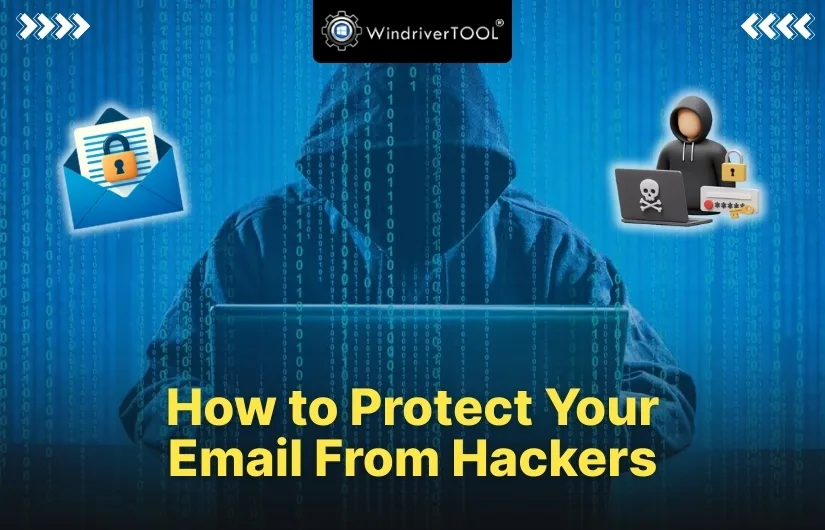In today’s digital world, email addresses are as important as phone numbers, and sometimes even more so. They are the primary form of official communication and act as a digital identity, allowing us to connect with people worldwide. Many people even use two to three email IDs - one for personal use and another for professional work.
Whether buying groceries, electronics, or signing up for a website, email addresses are often the first point of contact and also a major target for scams. Usually, phishing emails contain malicious links or attachments that lead to fraudulent websites or harmful downloads, causing stress, confusion, and even financial loss. Protecting yourself requires staying alert and being careful at all times.
Most importantly, protecting your email from hackers is not a one-time step-by-step process. Instead, it requires ongoing awareness and consistent effort. Make sure to also share these tips with your friends and family to help them stay protected.
Tip 1: Don’t Fall for Phishing Emails
Phishing through emails is one of the easiest targets used by hackers. Don’t respond to any stranger via email asking you for your personal information or login credentials, no matter how legitimate it looks. They often collect basic personal details like your date of birth and phone number. They then cleverly include some correct details in their message, making it look real and tricking you into clicking on harmful links.
Tip 2: Keep Your Antivirus Updated
Always use a top-rated, trustworthy antivirus software to protect your computer or any device from malware, which may protect you from hackers stealing your money and other personal information. This malware affects your computer by corrupting it through unusual download attachments, mostly found in unexpected emails.
Tip 3: Log Out After Using Public Devices
Whenever you use public PCs, log out of your email properly. This is crucial because someone who might use the same PC after you can easily log in to your account and potentially hack it, breaching your personal account credentials and other sensitive information. Be cautious, as public PCs may already contain malware that can harm your account.
Tip 4: Avoid Weak and Easy Passwords
Weak passwords make it simple for hackers to break in, which raises the chances of data leaks, identity theft, and even financial damage. Weak passwords, such as birth dates, year, or month, are easy to guess for hackers, so avoid using them. As soon as hackers get access to your email account, they try to steal your money or make fraudulent transactions in your name. Always create strong passwords of at least 12–15 characters, as longer ones are much harder to guess.
Note: Never reuse the same password for multiple accounts, as this creates a single point of failure.
Tip 5: Enable Two-Factor Authentication (2FA)
2FA is seen as a strong defense against common threats like phishing and data breaches. This feature sets a standard that stolen passwords are not enough to gain access to your account. It helps protect your account from bulk phishing attacks by cybercriminals. Apart from data theft and phishing scams, your email ID containing your identity data can be used by scammers to manipulate your loved ones, so it is important to enable 2FA.
Make sure to enable this feature, as an email account serves as an entryway to many other online platforms. Hackers can use this access to reset your passwords and breach your banking, social media, and other personal services or platforms.
Frequently Asked Questions
How can I secure my email with 2FA?
Enabling 2FA is essential to protect your email account from being hacked.
- Sign in to your email account and go to account settings or the security page.
- After that, find options like “Security” or “Account Security.”
- Select the option to Turn on 2 Step Verification or Two-factor authentication.
- Next, you'll be asked to choose how you'd like to receive a code: through the Authenticator app, SMS/Text message, security, or Google prompts.
- Enter the code or complete the required action to verify your chosen method.
How can you check if an email is safe?
Legitimate organizations always use their official domain instead of a private one. However, they sometimes manage to carry a similar domain but with slight changes or misspellings. Before you click on the attached link, hover your mouse over the link and check if the URL matches the website described in the email. Give your email a thorough read, because a fraudulent email will have grammatical errors, typos, or awkward phrasing. Scammers use high-pressure tactics and create a sense of urgency to make you act without thinking.
Can someone hack my email without my password?
Yes, it is possible. Scammers send fake emails or messages that appear to be from a real company, tricking you into revealing your password or other sensitive information. Hackers can trick you into giving them credentials by attaching a software link within your email. Once you click on such links, your device gets infected with malware, and a keylogger records your keystrokes, including your password as you type it.

